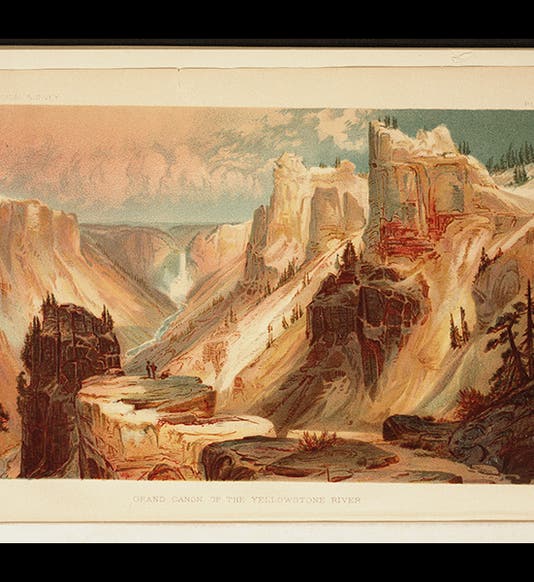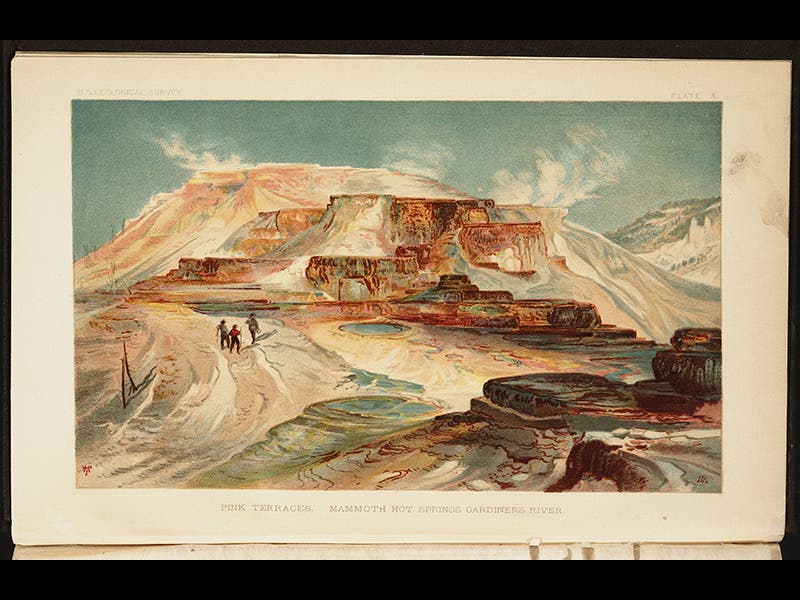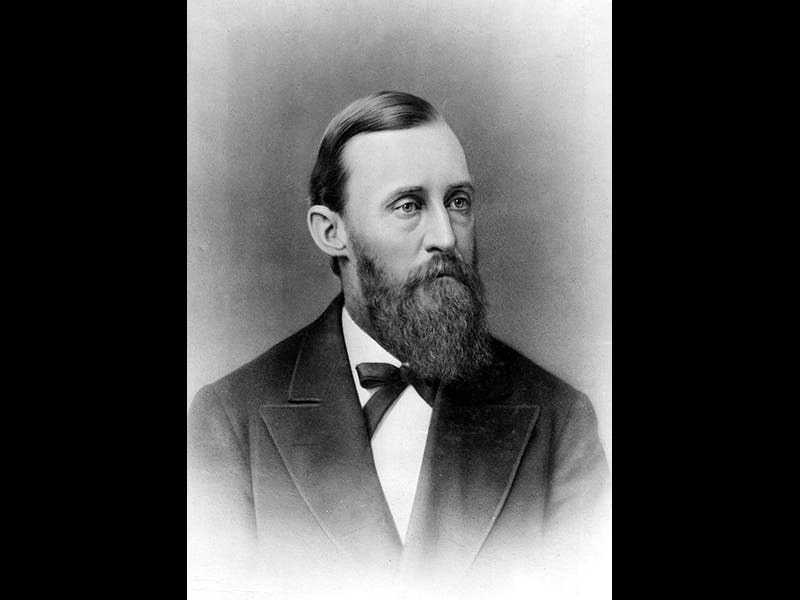Scientist of the Day - Ferdinand Hayden
Ferdinand Vandeveer Hayden, an American geologist, was born Sep. 7, 1829. After the Civil War, the U.S. government decided to launch four expeditions to explore the American West, and Hayden was put in charge of the Geological Survey of the Territories, which focused on the Rocky Mountain region. The first expedition set out in 1867, and Hayden and his men pursued their task until 1879. Since this was a government survey, an annual report was required, and the collection of 12 such Reports by Hayden constitutes one of our great resources on the region and the period. We see above a photograph of Hayden and his team in 1870; Hayden is seated at the far end of the table, without a hat (second image).
In 1871, Hayden led his crew to Yellowstone, which had just been discovered, and he returned there again and again. In the 1874 season, the survey discovered the Mountain of the Holy Cross in Colorado. Hayden was accompanied by a young photographer, William Henry Jackson, whose photographs of the west would make him famous, but the wood engraving above (third image) was based on a painting by a fledgling artist, Thomas Moran, who would also become famous for his Yellowstone paintings. Four of those paintings appeared in reduced form in full color in the 12th Report (1878; published in 1883); we see above two of those, the Canyon of the Yellowstone (first image) and Mammoth Hot Springs (fifth image).
The fourth image is a wood engraving of the falls of the Yellowstone River, accompanying the Report for 1873. The final image shows Hayden as he was seldom seen, in civilian dress and posing in a studio.
Dr. William B. Ashworth, Jr., Consultant for the History of Science, Linda Hall Library and Associate Professor, Department of History, University of Missouri-Kansas City. Comments or corrections are welcome; please direct to ashworthw@umkc.edu.












